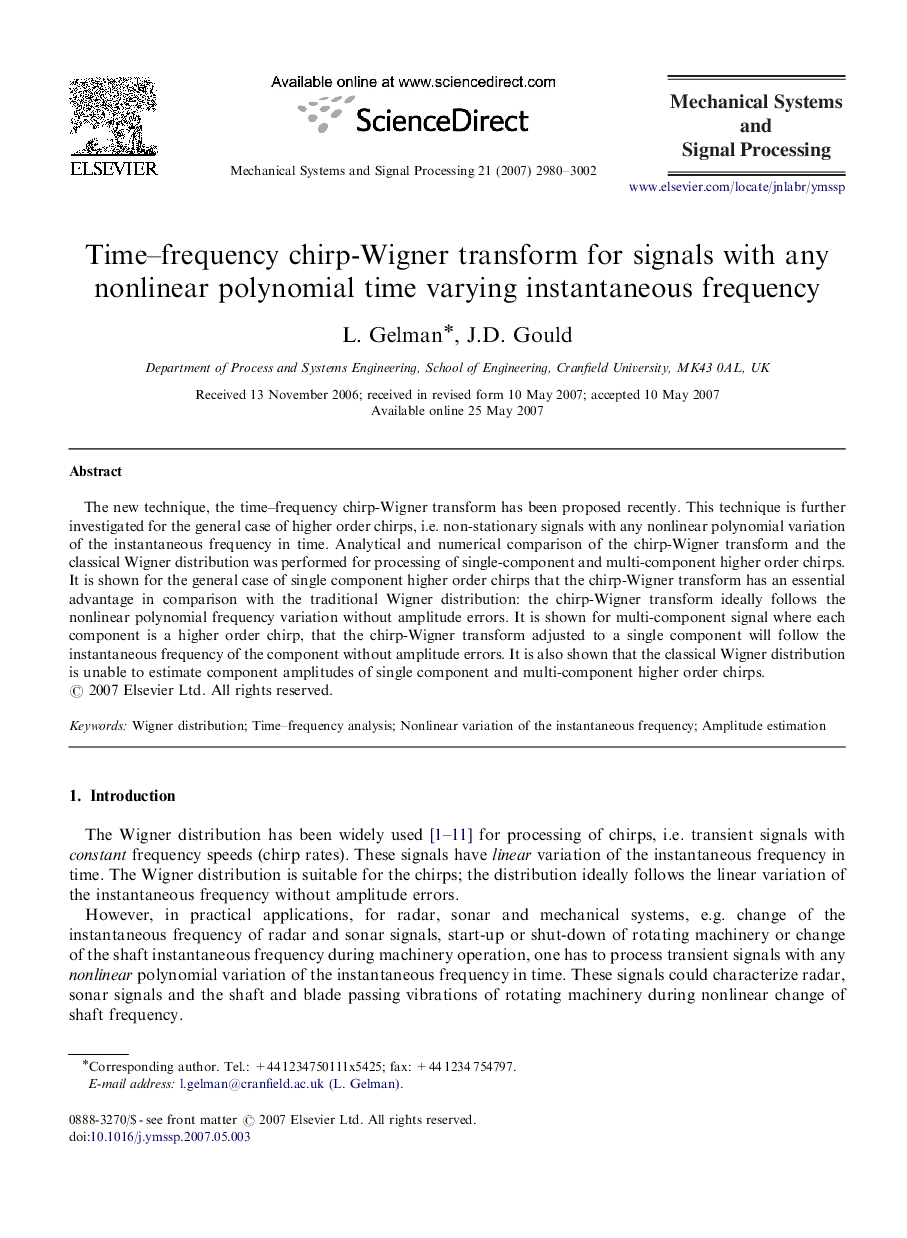| Article ID | Journal | Published Year | Pages | File Type |
|---|---|---|---|---|
| 561824 | Mechanical Systems and Signal Processing | 2007 | 23 Pages |
The new technique, the time–frequency chirp-Wigner transform has been proposed recently. This technique is further investigated for the general case of higher order chirps, i.e. non-stationary signals with any nonlinear polynomial variation of the instantaneous frequency in time. Analytical and numerical comparison of the chirp-Wigner transform and the classical Wigner distribution was performed for processing of single-component and multi-component higher order chirps. It is shown for the general case of single component higher order chirps that the chirp-Wigner transform has an essential advantage in comparison with the traditional Wigner distribution: the chirp-Wigner transform ideally follows the nonlinear polynomial frequency variation without amplitude errors. It is shown for multi-component signal where each component is a higher order chirp, that the chirp-Wigner transform adjusted to a single component will follow the instantaneous frequency of the component without amplitude errors. It is also shown that the classical Wigner distribution is unable to estimate component amplitudes of single component and multi-component higher order chirps.
